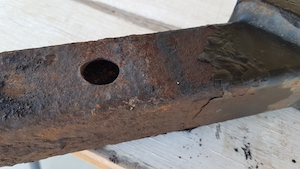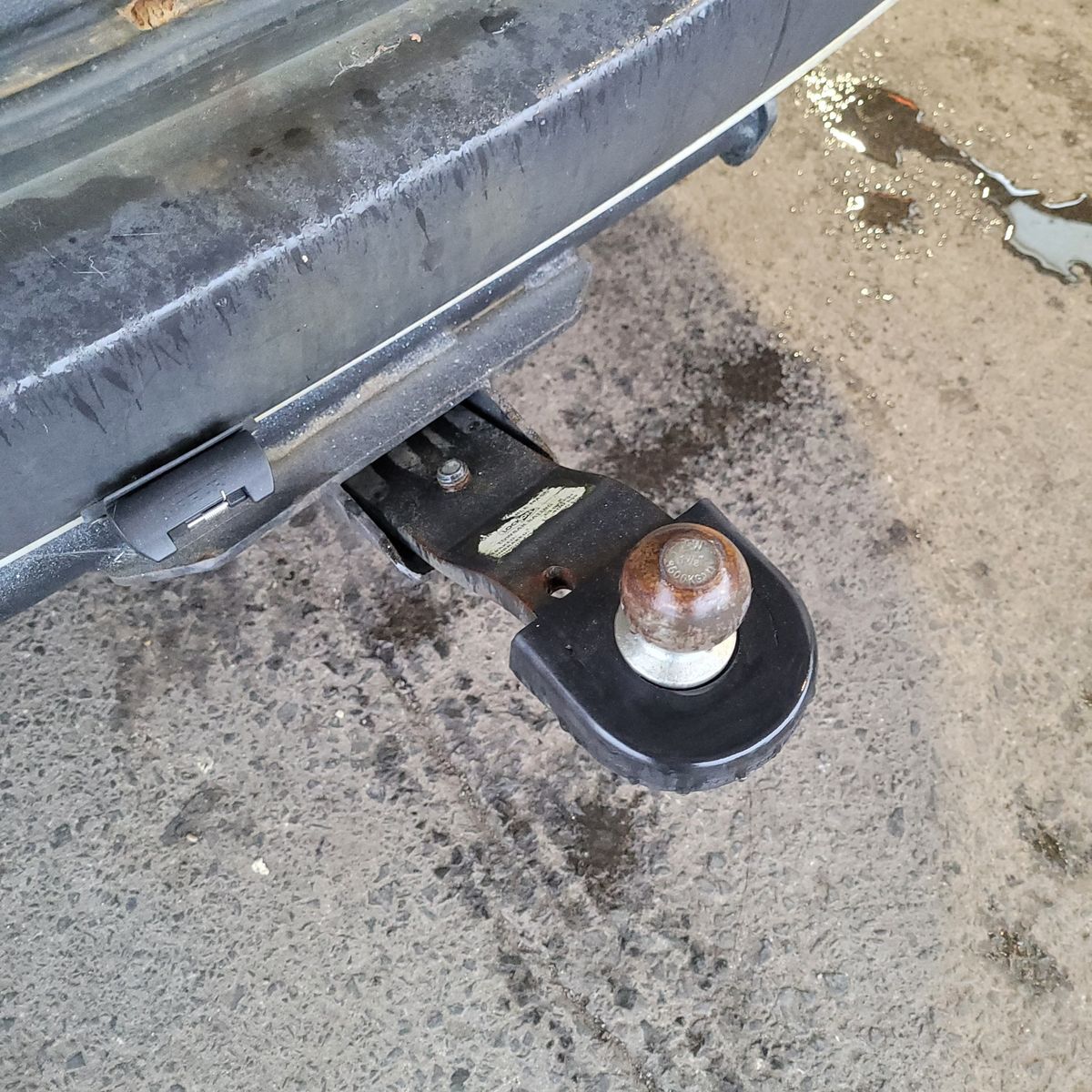Most folks roll up for a WOF Hamilton check and know they’ll be looking at brakes, tyres, maybe a dodgy seatbelt. But the towbar? That gets overlooked heaps. Thing is, if the towbar’s got a fair bit of rust or corrosion, you could be walking away with a failed sticker – and no one wants to waste a morning only to find out your next trip out to Te Awamutu is on hold. If you haven’t seen the full WOF inspection checklist, have a squiz. It covers a lot, and yes, towbars are in there.
We see it pretty often when we’re under Subarus, Skodas, Hyundai i30s, or an older Toyota Blade – regardless if it’s Mrs. dropping it in after coming back on Morrinsville Road, or someone stuck behind the buses on Peachgrove. Rust on the towbar isn’t just an eyesore. It’s a safety hazard, especially for anything like towing the jet ski down to Lake Karapiro or shifting the trailer from Rototuna to Cambridge.
What gets checked on your towbar for WOF?

Part of a rusty towbar.
Alright, so when you’re in for a WOF, the inspector isn’t just glancing at that hitch – they’re actually checking the whole towbar setup. That’s the bar itself, plus the towbar coupling (the towball and all that jazz). If you’re curious, the nitty-gritty’s right here (but who wants to wade through all that, eh?).
The towbar – that chunky bit of metal bolted to the back – is matched to your car, whether you’re driving a Suzuki Swift or a Euro like a Peugeot 3008. It has to fit your chassis just right. The coupling (or towball bit) is where whatever you’re towing actually hooks on. Most are 50mm, but sometimes folks coming in from Raglan have something a bit different for their camper trailers or boats. Different cars need different brackets and load ratings, too. One size fits all? Nope.
How does towbar rust even happen?
Towbars cop a hiding from NZ roads. Hamilton’s winter fog, frequent rain, boggy paddocks out past Matangi, and the classic stop-start mission down Boundary Road don’t help. Road salt, wet grass under a parked car, or even just regular old Waikato humidity – all prime culprits for rust.
Usually, two things make it worse:
Moisture – Rust loves moisture. Park up in the wetlands, or even just spend a winter’s night on the berm in Nawton, and your towbar’s copping a slow rust bath. That orange stuff starts small and, if you ignore it, can actually eat through the metal. That’s when it’s really dodgy.
Abrasion – Then there’s wear and tear from gravel, road grit, and the odd knock. We’ve seen a Civic Type R in from Cambridge, towbar caked from the trip and all the surface coating worn away, which lets rust take hold even quicker.
Why does rusty towbar mean a failed WOF?
Bit of surface rust? Usually not a drama. But once it’s corroded, the structural strength drops – and that’s what a WOF is about. You don’t want to be halfway up State Highway 3 heading to Otorohanga and have your towbar snap off, right? That’s why WOF checkers don’t muck around with corrosion. It’s all about road safety for you and everyone else.
If it’s mainly surface rust, one of our techs can usually clean, treat, and paint it up – sweet as for the recheck. But serious rust or proper corrosion? You’ll need a new one. There’s more ways a towbar can fail a WOF, too – see more info here if you’re curious.
Need a towbar fix or replacement in Hamilton?
If your WOF’s failed thanks to towbar rust or you’re not sure what’s under your Corolla, swing by Grimmer Motors. We’ll get it sorted so you can get back to real driving – not just sitting in Hamilton’s infamous Dinsdale traffic. We handle everything from surface rust repairs to full replacement on anything from Japanese hybrids to big Euro wagons. Friendly service, no mucking about, and you’re back out there towing in no time. If you want to sort it, book in for a car service Hamilton style today!

